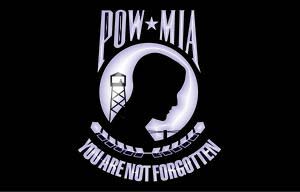Airman Missing From World War II Accounted For The Department of Defense POW/MIA Accounting Agency (DPAA) announced today that servicemen, missing from World War II, have been accounted for and their remains are being returned to their families for burial with full military honors. The Department of Defense POW/MIA Accounting Agency (DPAA) announced today that servicemen, missing from World War II, have been accounted for and their remains are being returned to their families for burial with full military honors.
Army Air Forces 1st Lt. William P. Cook of Alameda, California; Flight Officer Arthur J. LeFavre of Red Bank, New Jersey; Staff Sgts. Maurice J. Fevold of Chicago, Frank G. Lane Jr. of Cleveland and Ward C. Swalwell Jr. of Chicago; and Sgt. Eric M. Honeyman of Alameda, California, have been accounted for and will be buried with full military honors. Cook was buried Oct. 18, 2014, in Oakland, California. Fevold was buried Oct. 20, 2014, in Ft. Dodge, Iowa, and Lane was buried May 2 in Willoughby, Ohio. Honeyman was buried on June 22 in Trail, British Columbia, Canada. LeFavre will be buried on Aug. 18 in Arlington National Cemetery. The group representing the crew will be buried on Aug. 18 in Arlington National Cemetery. Swalwell will be buried on Aug. 20 in Arlington National Cemetery.
On Dec. 23, 1944, Cook along with five other B-26G Marauder crewmembers took off from Saint Quentin, France, on a mission to bomb an enemy-held bridge in Eller, Germany. The aircraft was shot down by enemy anti-aircraft fire near Seffern, Germany, near the Belgium border.
Following World War II, the Army Graves Registration Command (AGRC) conducted extensive field investigations and was unable to locate the aircraft and the crew. In May 1949, AGRC concluded the crew members were unrecoverable.
In 2006, a group of researchers from Airwar History Working Group Rhine-Moselle and History Flight -99th Division MIA Project located the wreckage of a B-26G associated with the loss of this crew, near Allmuthen, Belgium and notified the U.S. Army Mortuary Affairs Activity Europe. In 2007, a Department of Defense (DoD) team investigated the site and recommended it for excavation.
In 2012 and 2013, another DoD team excavated the crash site and recovered human remains, aircraft wreckage, and personal effects.
To identify Honeyman's remains, scientists from DoD and AFDIL used circumstantial evidence and forensic identification tools including, partial Y-Chromosome Short Tandem Repeat (Y-STR) DNA, which matched Honeyman's paternal-line cousins.
To identify Cook's remains, scientists from DoD and the Armed Forces DNA Identification Laboratory (AFDIL) used circumstantial evidence and forensic identification tools, including mitochondrial DNA, which matched Cook's maternal-line cousins.
To identify LeFavre's remains scientists from DPAA and the Armed Forces DNA Identification Laboratory (AFDIL) used circumstantial evidence and forensic identification tools, including, mitochondrial DNA, which matched LeFavre's maternal-line niece and grandniece.
To identify Lane's remains, scientists from DPAA and AFDIL used circumstantial evidence and forensic identification tools including, partial Y-Chromosome Short Tandem Repeat (Y-STR) DNA, which matched Lane's paternal-line nephew.
To identify Fevold's remains, scientists from DoD and AFDIL used circumstantial evidence and forensic identification tools including, mitochondrial DNA, which matched Fevold's maternal-line niece.
To identify Swalwell's remains scientists from DPAA and the Armed Forces DNA Identification Laboratory (AFDIL) used circumstantial evidence and forensic identification tools, including, mitochondrial DNA, which matched Swalwell's maternal-line sister and niece.
|
We do not have information on individuals beyond what is listed on this site.
For more information, visit www.dpaa.mil or call 703-699-1420.
We are not associated with any government agency.
